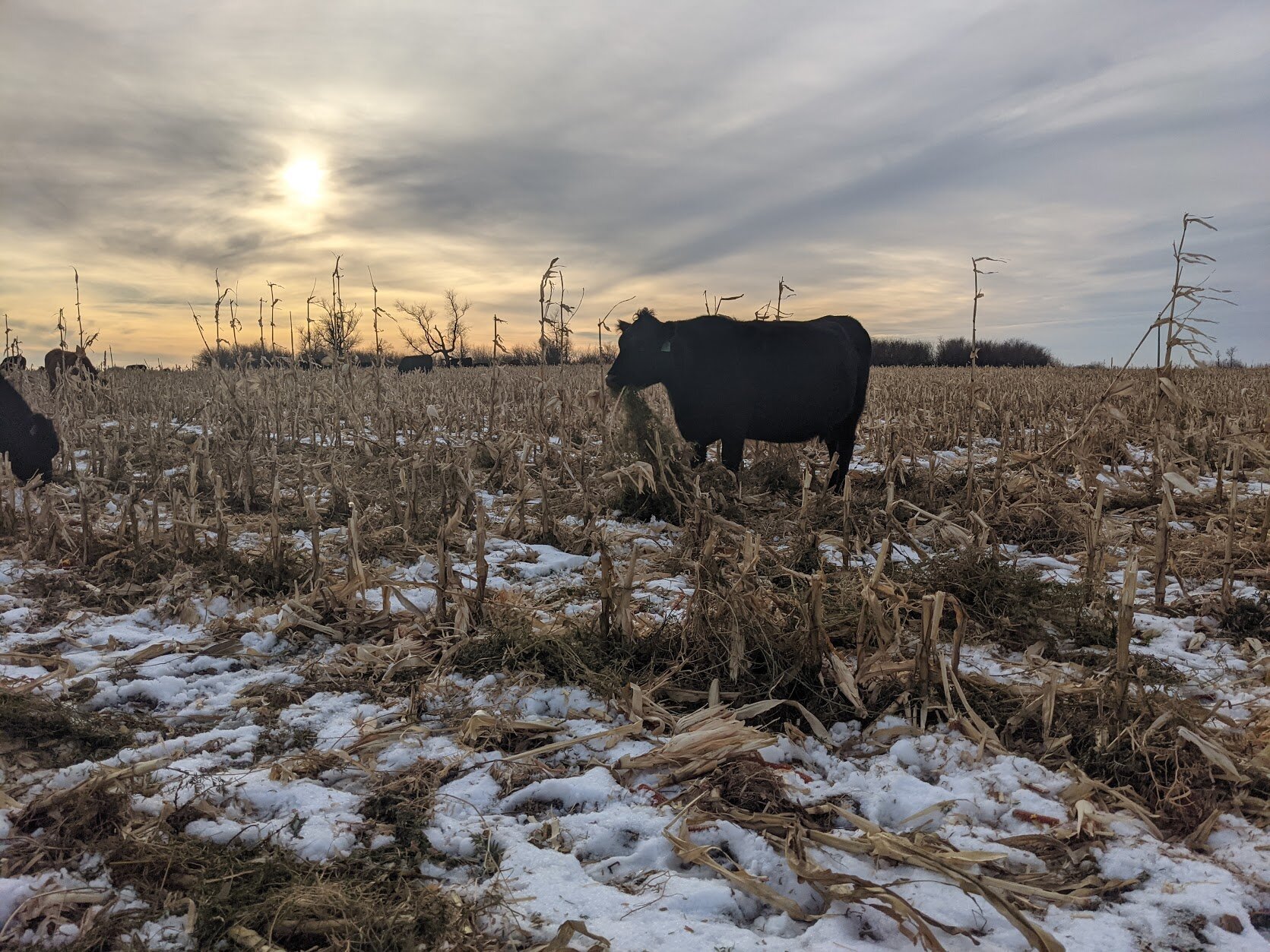
corn/vetch
THE THEORY
The corn (warm-season grass) provides a micro-climate for the vetch (cool-season legume). In return, the hairy vetch protects the soil and provides late-season nitrogen for the corn. Both of these species are mycorrhizal fungal dependent and utilize each other’s root systems to share minerals and water.
A carbon:nitrogen Balance
The vegetative vetch (low C:N) balances the high carbon corn (high C:N). This provides an ideal environment for soil microbes to thrive (24:1). This balance also results in a highly palatable cattle feed for the same reason (balanced energy & protein). To learn more about Carbon:Nitrogen and why it is important, click here.
Source: NRCS - USDA
* Disclaimer: these are only guidelines we have adopted from our own experiences with this intercrop. Each environmental condition will be different and encourage you to try your own rates and practices you are comfortable with.
corn/vetch
seeding information
8 Ibs per acre of Hairy Vetch.
80 Ibs of N at the same time we are seeding. (mid-row bander)
Plant the corn the following day with a 30 inch corn planter. (30 inch & 60 inch rows have been trialed)
corn/vetch
herbicide management
Pre-emerge glyphosate. 1 pass in crop glyphosate @ 300 grams/acre. *hairy vetch can tolerate glyphosate sprayed at lower rates.
Our observation: vetch with two passes of glyphosate was no lesser in biomass than the vetch that had 1 pass. Also had less weeds.
Corn/vetch
harvest options
Grazing (a cow has the ability to balance her ration more effectively with another feed source)
Silage (grazing availability after instead of corn stalks)
Grain Corn (next year’s nitrogen credit)
corn/vetch
most common mistake
Cutting nitrogen back too much thinking the vetch will provide season-long nitrogen for the corn.
The vetch doesn’t establish early enough to supply the corn with it’s entire nitrogen demand during vegetation.
Corn/vetch
important to note
After 3 years of intercropping corn & vetch, we have concluded the ideal direction to seed is North/South. In the heat of the day, sunlight is able to penetrate down the North/South rows, providing the vetch with enough sunlight to establish & stay vegetative.
Both of these photos were taken at 1:30 pm.
Image: Sown North/South
Image: Sown East/West
Corn/vetch
30 inch rows
corn/vetch
60 inch rows
COST ANALYSIS
Approx. Cost of Feeding Hay Bales
Assumptions: 1400 Ib cow
**a ruminant animal will consume roughly 3% of body weight per day.
=42 Ibs/day
Average cost of quality hay: $0.06/Ib
42 Ibs/day x $0.06/Ib
=$2.52 per day
A 200 head cow herd will consume roughly $500/day. (plus depreciation, fuel, time/labor, manure removal)
Corn was harvested as a cash crop. Residual grazing: 100 head/acre/day
Based on the “cost of feeding hay bales” calculation, not feeding hay - provides additional value to the farm of $200-$250/acre.



















